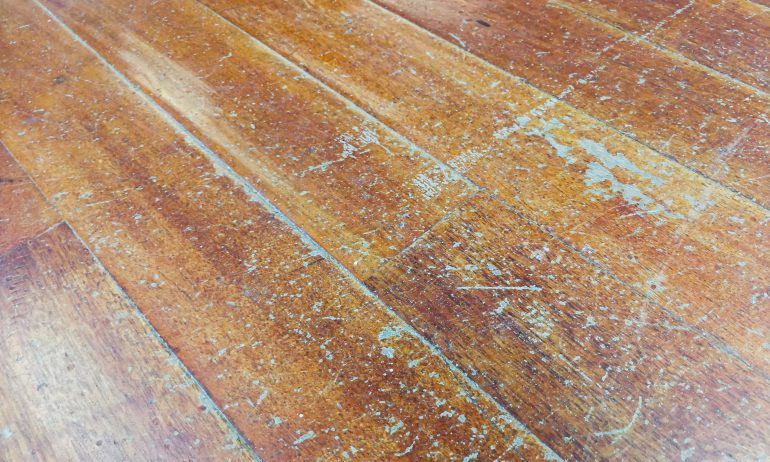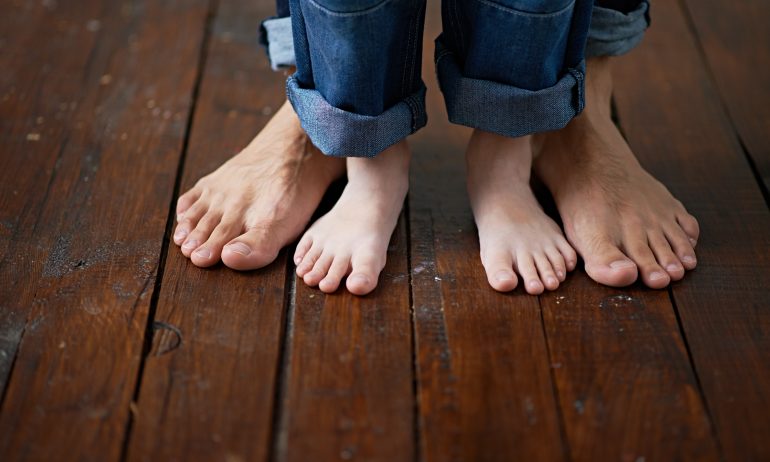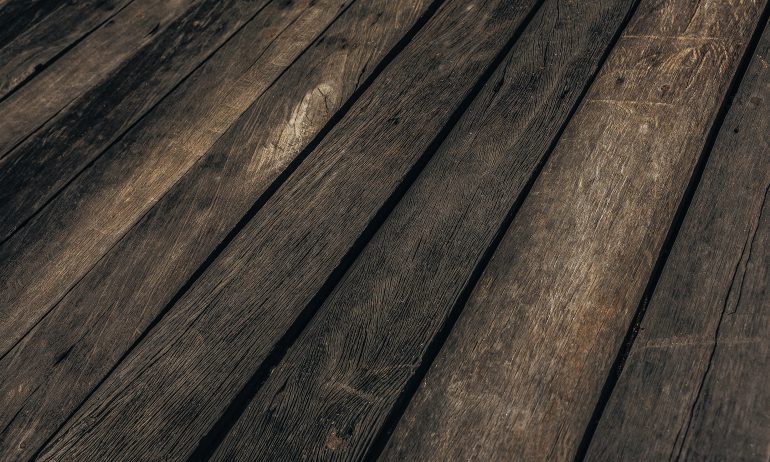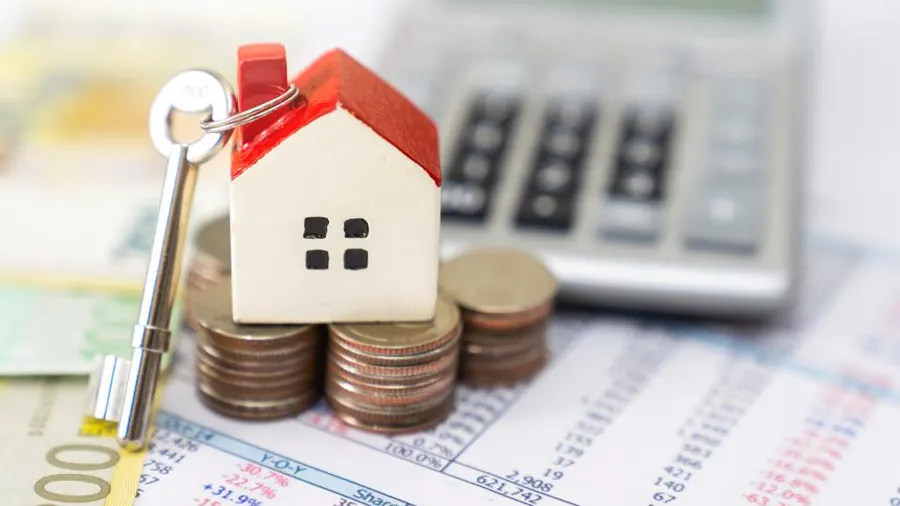Refinishing hardwood floors can make old, worn surfaces look new again. In some cases, it's the only way to restore damaged flooring to its original glory. But sanding and refinishing floors is costly, messy and time-consuming, and you want to be sure it's the right solution before you commit.
For hardwood floors that are in fairly decent shape, you might be able to get away with a faster, less expensive option instead: screening and recoating. With this method, you buff the floors and apply a fresh coat of polyurethane, a glossy finish that protects the wood.
So how do you know if your hardwood really needs a total refinishing or just a quick screen and recoat? Examine your floors carefully, and if you notice any of these six signs, only a complete refinishing will properly restore your floors.
» MORE: Estimate the cost of your home renovation
1. Major scratches and dents

It’s nearly impossible to avoid getting some minor dings and scratches in hardwood floors, especially with kids or pets. But when the damage becomes widespread and penetrates the poly coating into the wood itself, only a powerful sanding goes deep enough to reveal an undamaged surface. This isn’t just a cosmetic issue; once scratches enter the wood, your floors become vulnerable to water damage.
2. Cupping
When floorboards bend downward from their edges in a concave shape, it’s called cupping. Not only does cupping look unattractive, it’s evidence of water damage. This type of damage doesn’t only come from spills and drips; humidity can also be a culprit. Sanding will successfully resolve mild cupping, but if any floorboards are sticking up or separating, you’ll need to replace those individual boards.
» MORE: 6 Ways to avoid costly home renovation mistakes
3. Splinters

If walking on your hardwood floors without shoes means risking painful splinters, this indicates that your sealant has worn away and the wood underneath is damaged. Sanding is the only way to get under that damage to restore smoothness and safety — and a fresh layer of sealant should protect this new surface for many years.
4. Gray floorboards
Often mistaken for a charming patina that adds character to older homes, floorboards that have turned gray indicate water damage. After refinishing, those once-gray floorboards should look brand new, but be aware that any boards that have turned black are beyond help and must be replaced.
5. Water stains
Stained floorboards are a sure sign of water damage. While most water stains can be prevented by simply wiping up spills quickly, unaddressed plumbing leaks, air conditioner drips and pet accidents inevitably stain hardwood over time. Once these telltale stains appear, refinishing is required to reveal and protect the clean wood beneath them.
6. Fading and discoloration

A sunny room feels amazing, but over time too much sun can fade and discolor hardwood floors. If you’ve noticed fading or color changes on the floor near glass doors and windows, refinishing will restore a uniform hue.
What's next?
If your hardwood floors need refinishing, there are two basic ways you can get the job done: Hire professionals or do it yourself.
A DIY approach could be a good solution if you are physically up to the task, have enough time to learn about refinishing techniques — for example, by watching video tutorials — and feel confident that you have the right skills, tools and materials to do a decent job. If you're short on time, aren't physically able to do the job or want to avoid newbie mistakes that could leave the floor looking less than perfect, finding a skilled handyman or licensed contractor to do the work is well worth the added cost.





